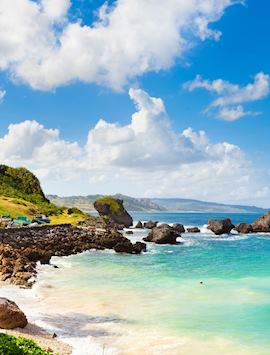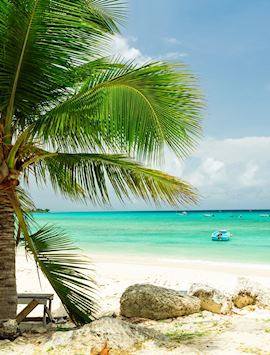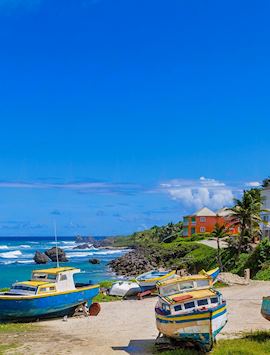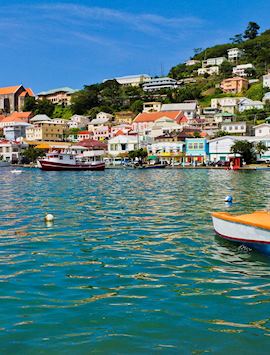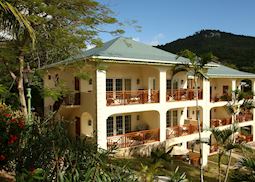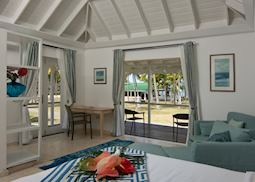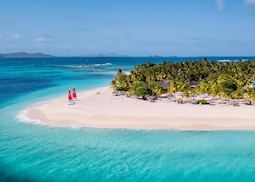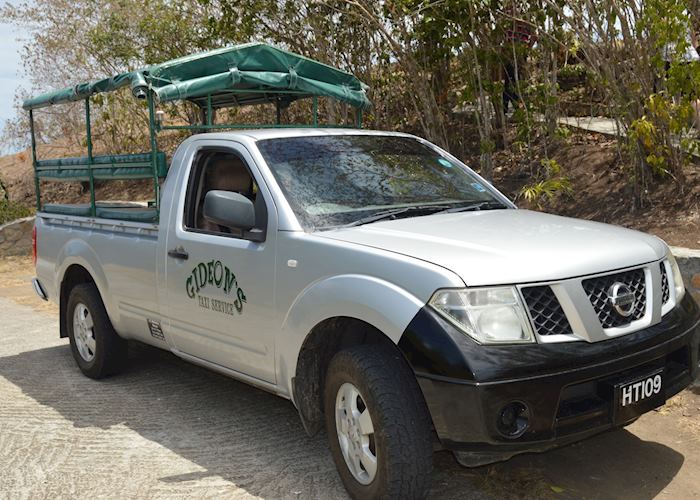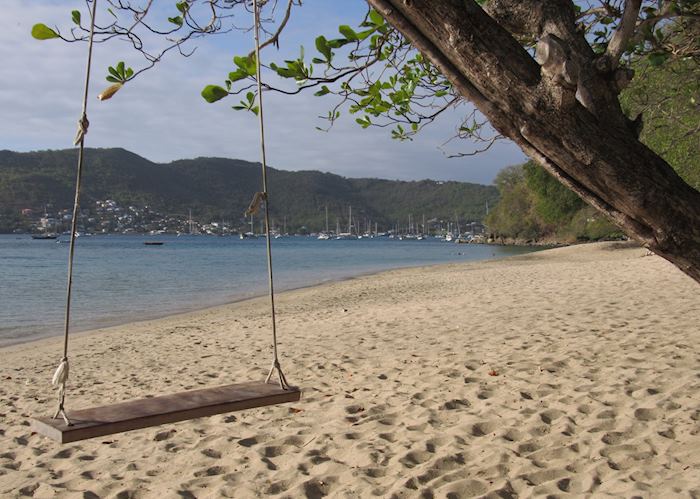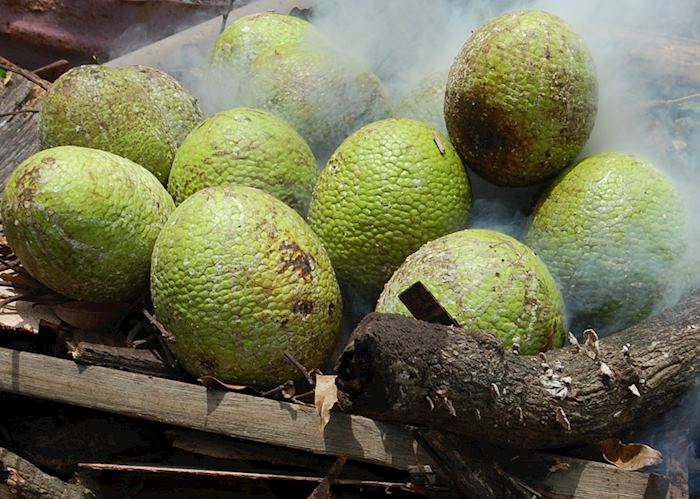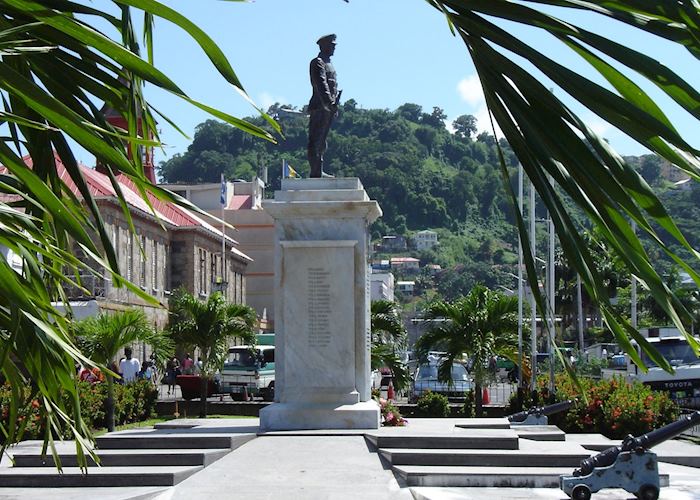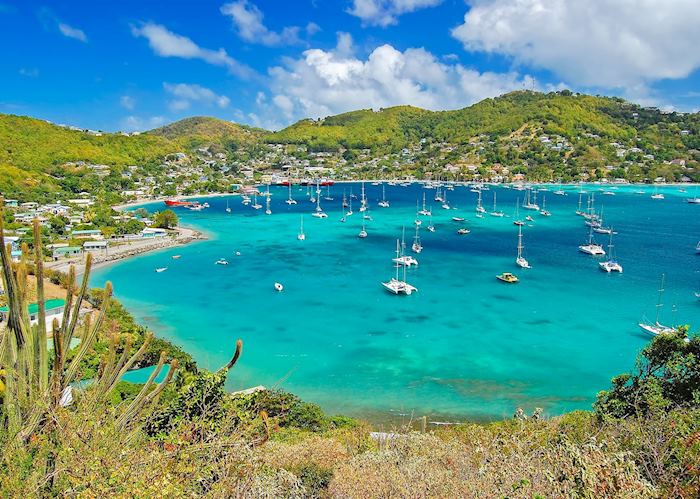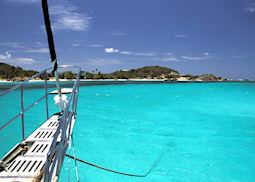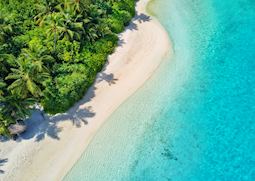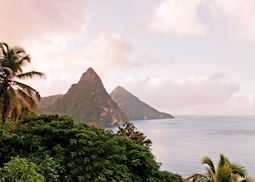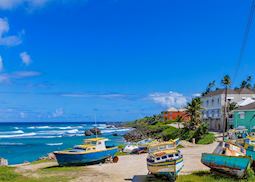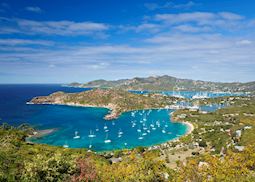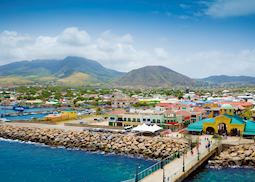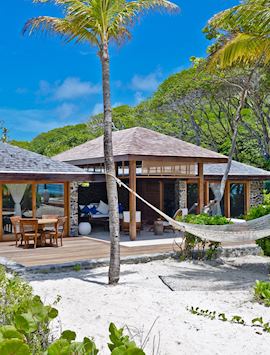

Tailor-made St Vincent and the Grenadines holidays shaped around your passions
Powdery sands, palm trees strung with hammocks and a laid-back approach to life invite you to relax and enjoy this unspoiled corner of the Caribbean. Most of the islands and islets in this volcanic island chain are uninhabited, covered in thick jungle overhanging white-sand beaches. The rest are occupied with brightly painted fishing villages, lively markets and the occasional crumbling French fort.
You can dine on fresh seafood on the sleepy island of Bequia, laze under a thatched umbrella on Palm Island or enjoy the exclusivity of the private island of Petit St Vincent. All lie within easy reach of Tobago Cays Marine Park, a snorkeller’s and diver’s playground. Our Caribbean specialists have explored St Vincent and the Grenadines at the leisurely pace it demands, and they’ve stayed in our hotels. They can advise you on anything from which rooms have the best views to where to go for a sunset cocktail, so that you can get the most out of your holiday to St Vincent and the Grenadines.
Suggested tours for St Vincent and the Grenadines
These tours give you a starting point for what your holiday to St Vincent and the Grenadines could entail. Treat them as inspiration, as each trip is created uniquely for you.
Where to stay in St Vincent and the Grenadines
We know that where you stay is an important part of your trip. That’s why we’ve hand-picked the best properties in St Vincent and the Grenadines, from beachside hideaways to activity-filled family resorts.
-
![Junior Plantation Suites, Bequia Beach Hotel, Bequia]()
Bequia Beach Hotel
St Vincent and the Grenadines -
![One Bedroom Cottage Lounge, Petit St. Vincent, Petit St Vincent]()
Petit St. Vincent
St Vincent and the Grenadines -
![Bequia Plantation Hotel, Bequia]()
Bequia Plantation Hotel
St Vincent and the Grenadines -
![Palm Island Resort & Spa, Palm Island]()
Palm Island Resort & Spa
St Vincent and the Grenadines
Why travel with Audley?
- 100% tailor-made tours
- Fully protected travel
- Established for over 25 years
- 98% of our clients would recommend us
Best time to visit
Our specialists advise on the best months to visit St Vincent and the Grenadines, including information about climate, events and festivals.
Request our brochure
Covering all seven continents, The World Your Way shows you how you can see the world with us. It features trip ideas from our specialists alongside hand-picked stays and experiences, and introduces our approach to creating meaningful travel experiences.

Useful information for planning your holiday in St Vincent and the Grenadines
English is the official language of St Vincent and the Grenadines. Most locals also speak Vincentian Creole. This English-based creole contains elements of French, Spanish, and Portuguese, and has also been influenced by the languages of the Garifuna and the West Africans brought to the Caribbean by enslaved people.
The currency of St Vincent and the Grenadines is the Eastern Caribbean dollar (EC$ or XCD), which is pegged to the US dollar. All the major islands except for Mayreau have a bank and ATMs, and major credit cards are accepted at most hotels and larger restaurants.
US dollars are also widely accepted, but you’ll usually be given change in EC dollars, and at a lower exchange rate.
A tip of 10% is typical in St Vincent and the Grenadines but check your total first as a service charge of 10% is typically added to your bill in hotels and restaurants.
For the latest travel advice for St Vincent and the Grenadines, including entry requirements, health information, and the safety and security situation, please refer to the Foreign, Commonwealth & Development Office website.
In St Vincent and the Grenadines, you should try breadfruit, conch, curried goat, callaloo soup, and lobster. The breadfruit is the unofficial symbol of Saint Vincent, and the national dish is roasted breadfruit and fried jackfish. You’ll also find lots of seafood on local menus with red snapper, kingfish, and lambi (queen conch) often making an appearance, while lobster is a seasonal delicacy served from September to April.
For something sweeter, look out for madongo dumplings (made from arrowroot, coconut, and nutmeg) and banana fritters on local street stalls. The local beer is called Hairoun, the original Amerindian name for St Vincent, and rum is ubiquitous and is often mixed into a potent, sugary punch.
In St Vincent and the Grenadines, you can laze on powdery sands cocktail in hand, dine on seafood fresh off a boat, sip rum punch at sunset, or switch off completely on a private island. A little-visited corner of the Caribbean, these islands offer quiet beaches and local character as well as a lush landscape of lowland rainforest.
If you’d prefer something more active, you could spend your days kayaking, paddleboarding, snorkelling, or diving, walking a coastal path to little fishing villages and ruined forts, hiking along forest trails to volcanic craters, or taking a boat trip to spot dolphins, whales, turtles, and flying fish.
From private island retreats to family-run guesthouses and heritage hotels, St Vincent and the Grenadines offers a wide range of places to stay. For example, you could opt for a chic resort with kayaking, paddleboarding, and snorkelling off the beach, stay in a garden cottage next to a restored plantation house, or choose a beachfront villa on a secluded private island. For some ideas, browse our collection of places to stay in St Vincent and the Grenadines.
St Vincent and the Grenadines is made up of 32 islands but only nine are inhabited, and most visitors head to Bequia, St Vincent, Palm Island, or Petit St Vincent. St Vincent is the largest of the islands and home to the village-like capital, Kingstown. You can hike up the volcanic caldera of La Soufrière in its mountainous interior or relax on sweeping bays.
Bequia, the largest of the Grenadine islands, has a laid-back charm, white-sand beaches, and vibrant coral reefs. For some of the best snorkelling in the Caribbean, take a trip to Tobago Cays, a marine park of five uninhabited islands enclosed by a huge horseshoe reef where leatherback turtles and shoals of tropical fish can be seen.
For seclusion and exclusivity, though, the private island retreats of Petit St Vincent and Palm Island offer luxury villas, pristine beaches, and turquoise seas.
It takes around 11 hours to fly from the UK to St Vincent and the Grenadines.
The time zone in St Vincent and the Grenadines is UTC-4 hours. Daylight Savings Time is not observed here.
Taxis are the best way to get around the islands in St Vincent and the Grenadines. Fares are set by the government, but taxis don’t have meters so agree on a price before starting your journey. Local ferries run between the islands, or you could also opt to rent a private boat and island hop on your own timetable.
Use our travel tool to find up-to-date visa and passport requirements for St Vincent and the Grenadines. Enter where you’re travelling to and from (including any stopover destinations en route or flight layovers), along with your intended travel dates and passport details, for a full list of requirements.
Speak to your doctor about vaccine advice for St Vincent and the Grenadines and ensure you’re up to date with the recommended vaccinations at home. You can also check the suggested vaccinations on the Travel Health Pro website.
St Vincent and the Grenadines in pictures
Our expert guides to travelling in St Vincent and the Grenadines
Written by our specialists from the viewpoint of their own travels, these guides will help you decide on the shape of your own trip to St Vincent and the Grenadines. Aiming to inspire and inform, we share our recommendations for how to appreciate St Vincent and the Grenadines at its best.
-
![My travels in the Caribbean]()
My travels in the Caribbean
Marketing Manager Narelle captured this footage when she went island-hopping around the islands of the Caribbean, stopping off at Barbados, Grenada and Saint Vincent and the Grenadines.
-
Touring in the Caribbean: trips to get you out of the resorts ![St George's, Grenada]()
Touring in the Caribbean: trips to get you out of the resorts
Touring in the Caribbean: trips to get you out of the resorts
Known for beach holidays, the Caribbean is often overlooked as a multi-stop destination for wider exploring. Caribbean specialist Annabel picks out her top three trip ideas to give you an idea of what’s possible, if you want to get beyond your resort.
Read this guide -
What to do in St Vincent and the Grenadines: our highlights guide ![Petit St Vincent, St Vincent & The Grenadines]()
What to do in St Vincent and the Grenadines: our highlights guide
What to do in St Vincent and the Grenadines: our highlights guide
Our Caribbean specialists choose their top things to see and do on a trip to St Vincent and the Grenadines. Highlights include exploring Bequia and St Vincent, sailing to the Tobago Cays, staying on a private island and walking the coastal path on Union Island.
Read this guide -
From beach to beach: island-hopping in the Indian Ocean and Caribbean ![Maldives beach]()
From beach to beach: island-hopping in the Indian Ocean and Caribbean
From beach to beach: island-hopping in the Indian Ocean and Caribbean
Sail around the Caribbean, catch a local ferry in the Seychelles or watch the Maldives spread out below on a scenic flight. Our beach specialists reveal how journeying between islands is as interesting as the destinations themselves, and suggest their top island-hopping combinations.
Read this guide
Other popular destinations
Still looking for ideas? If St Vincent and the Grenadines has captured your interest, we think you might also like these destinations.



